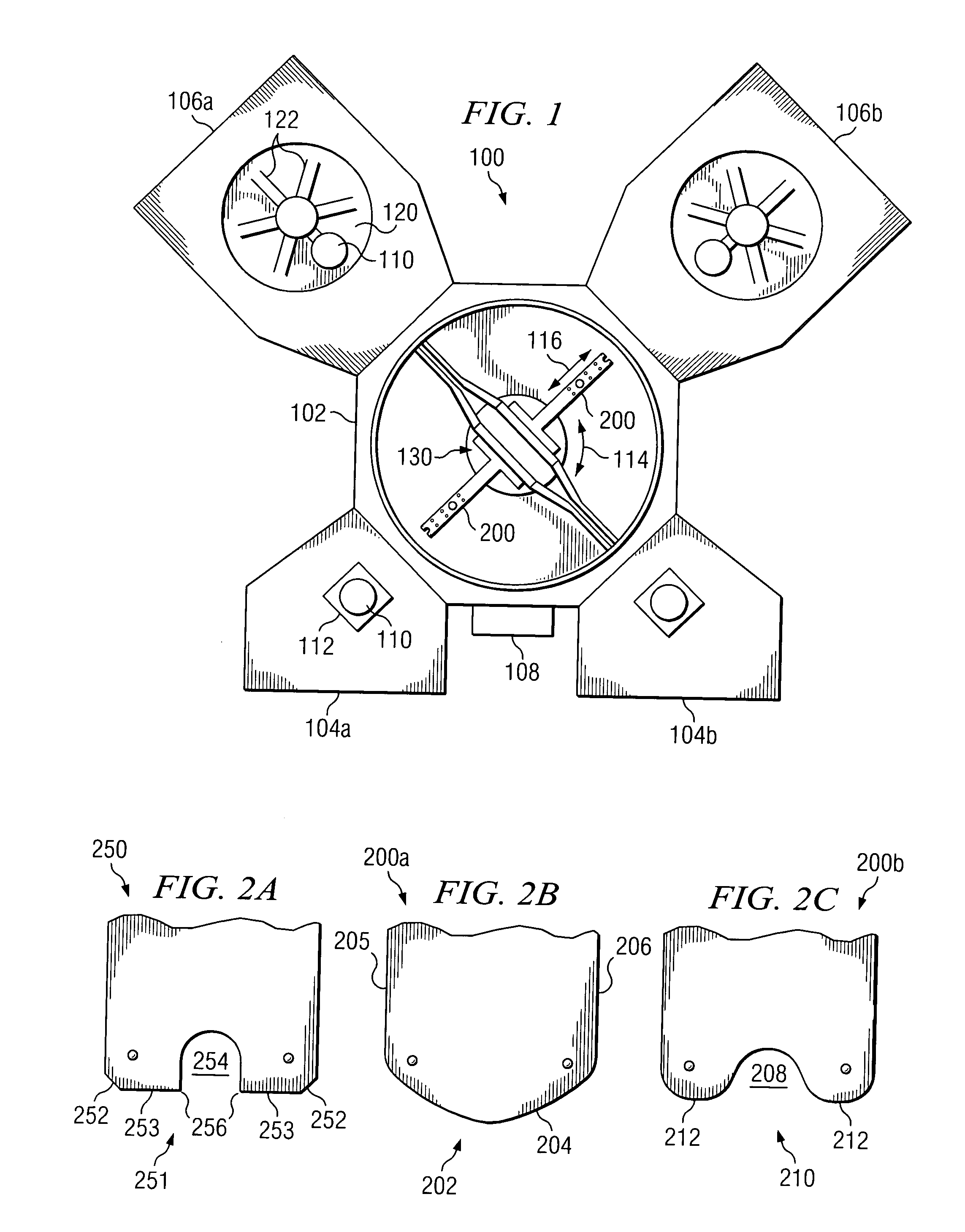Robot blade for handling of semiconductor waffers
a robotic blade and semiconductor technology, applied in the field of semiconductor wafer processing, can solve the problems of delamination of wafers and save considerable time and money, and achieve the effect of preventing delamination or peeling of the distal end, reducing the risk of delamination and avoiding the deterioration of any portion
- Summary
- Abstract
- Description
- Claims
- Application Information
AI Technical Summary
Benefits of technology
Problems solved by technology
Method used
Image
Examples
Embodiment Construction
[0012] Example embodiments of the present invention and their advantages are best understood by referring now to FIGS. 1 and 2C of the drawings, in which like numerals refer to like parts.
[0013]FIG. 1 is a partial plan view of a wafer processing system 100 in accordance with one embodiment of the present invention. Processing system 100 generally represents the SEQUEL family of processing systems manufactured by Novellus Systems, Inc.; however, other suitable processing systems are contemplated by the present invention. In the illustrated embodiment, processing system 100 includes a transfer chamber 102 disposed between a pair of load locks 104a, 104b and a pair of process chambers 106a, 106b. Processing system 100 also includes a cool station 108.
[0014] Transfer chamber 102 includes a pair of robot blades 200 (also known as end effectors) that function to transfer semiconductor wafers 110 or other suitable substrates within processing system 100. Accordingly, robot blades 200 are...
PUM
 Login to View More
Login to View More Abstract
Description
Claims
Application Information
 Login to View More
Login to View More - R&D
- Intellectual Property
- Life Sciences
- Materials
- Tech Scout
- Unparalleled Data Quality
- Higher Quality Content
- 60% Fewer Hallucinations
Browse by: Latest US Patents, China's latest patents, Technical Efficacy Thesaurus, Application Domain, Technology Topic, Popular Technical Reports.
© 2025 PatSnap. All rights reserved.Legal|Privacy policy|Modern Slavery Act Transparency Statement|Sitemap|About US| Contact US: help@patsnap.com


